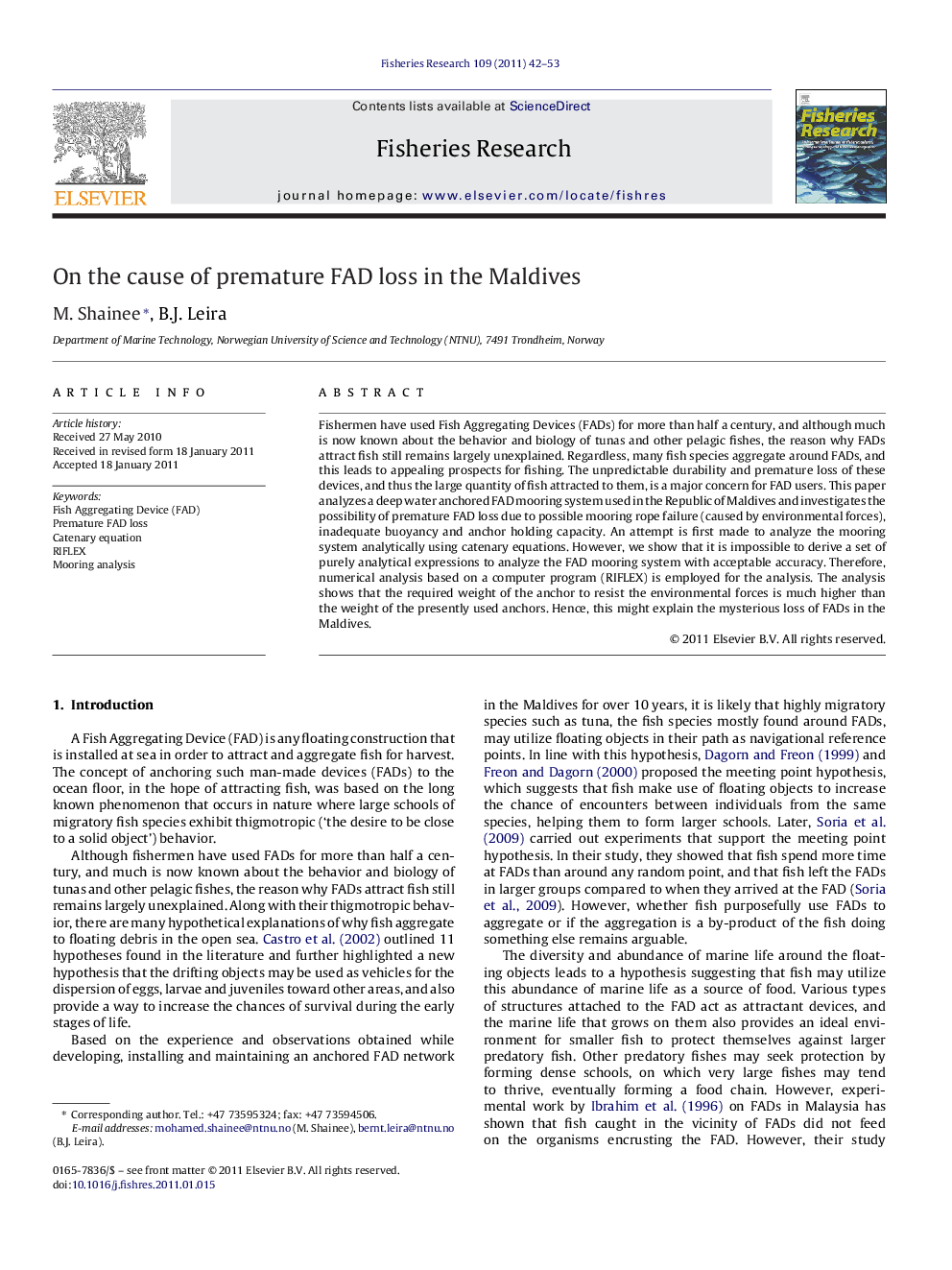| Article ID | Journal | Published Year | Pages | File Type |
|---|---|---|---|---|
| 4543673 | Fisheries Research | 2011 | 12 Pages |
Fishermen have used Fish Aggregating Devices (FADs) for more than half a century, and although much is now known about the behavior and biology of tunas and other pelagic fishes, the reason why FADs attract fish still remains largely unexplained. Regardless, many fish species aggregate around FADs, and this leads to appealing prospects for fishing. The unpredictable durability and premature loss of these devices, and thus the large quantity of fish attracted to them, is a major concern for FAD users. This paper analyzes a deep water anchored FAD mooring system used in the Republic of Maldives and investigates the possibility of premature FAD loss due to possible mooring rope failure (caused by environmental forces), inadequate buoyancy and anchor holding capacity. An attempt is first made to analyze the mooring system analytically using catenary equations. However, we show that it is impossible to derive a set of purely analytical expressions to analyze the FAD mooring system with acceptable accuracy. Therefore, numerical analysis based on a computer program (RIFLEX) is employed for the analysis. The analysis shows that the required weight of the anchor to resist the environmental forces is much higher than the weight of the presently used anchors. Hence, this might explain the mysterious loss of FADs in the Maldives.
Research highlights► In this study we analyze a deep water anchored FAD system in the Republic of Maldives to explore the likelihood of premature FAD loss due to mooring rope failure, inadequate buoyancy and anchor holding capacity. ► We found that it is impossible to derive a set of purely analytical expressions to analyze the FAD mooring system with acceptable accuracy. ► The numerical analysis clearly indicates that the ropes used in the mooring system have enough capacity to withstand the environmental condition of the site. ► The analysis also suggest that there is enough buoyancy in the floating section, ruling out the possibility of FAD loss due to collapse of the surface buoy while being dragged under during harsh weather conditions. ► The analysis suggest that the premature FAD loss in the Maldives could be due to the FAD being dragged into deeper water, since the anchor weight is found to be not enough to support the tension in the mooring line at the anchor point.
